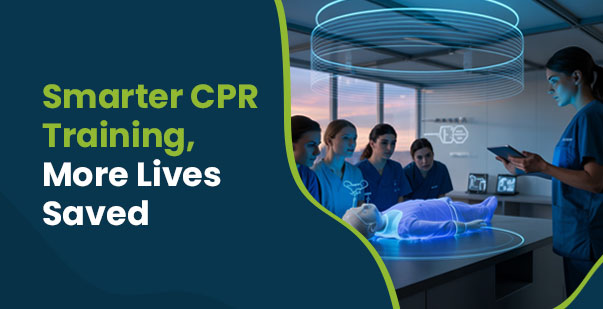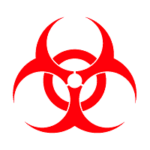Did you know that survival rates can decrease by 10% for every minute without CPR after cardiac arrest? Yet, on playing fields across the country, the golden window for response is frequently missed. When the heart stops beating, oxygen-rich blood is no longer delivered to vital organs, leading to irreversible damage within minutes. This is where Cardiopulmonary Resuscitation (CPR) plays a lifesaving role. With rhythmic chest compressions, CPR maintains blood circulation and provides oxygen to organs when an individual’s heartbeat or breathing stops suddenly. It also buys precious time until professional medical help arrives during a cardiac emergency on the sports field. When NFL player Damar Hamlin collapsed on the field due to cardiac arrest in 2023, immediate CPR saved his life. Thus, athletes should also learn sports CPR skills to respond to emergencies. Let’s explore its importance in these situations and discuss other relevant roles below.
What Are The Major Risks Associated With Sports?
Athletes often push their bodies to extremes, and the physical demands of the sport increase the likelihood of medical emergencies such as sudden cardiac arrest or severe injury. However, this inherent intensity creates several key risk factors that athletes, coaches, and medical staff must recognize. Here are some common risk factors associated with sports:
Cardiovascular Emergencies
Athletes, especially those involved in high-intensity sports like football or basketball, are at greater risk of cardiovascular emergencies. One in 5000-7000 young athletes are prone to heart-related issues. The physical strain placed on the heart during intense exertion can lead to heart arrhythmias or irregular heartbeats. This may increase the risk of sudden cardiac arrest. Factors such as underlying heart conditions, dehydration, or overexertion can also increase these risks. The best way to scan these cardiac issues is through regular screenings because several athletes might not be aware of their underlying heart conditions.
Choking or Drowning
Sports like swimming, water polo, or even boating carry the inherent risk of choking or drowning. Swimmers can accidentally inhale water or get caught in equipment, which leads to airway obstruction or the inability to breathe. Athletes may also be at risk of drowning in situations where they lose consciousness, get disoriented, or are trapped underwater.
Quick Tip: Start the Heimlich maneuver immediately if you see someone choking. Stand behind the person, wrap your arms around their waist, and deliver quick, upward abdominal thrusts to dislodge the obstruction. Alternatively, start CPR immediately if the person is not breathing.
Severe Trauma or Injury
High-contact sports, such as rugby, football, or hockey, often result in severe trauma or injury. These can include concussions, fractures, internal bleeding, or spinal injuries. Such instances usually occur due to collisions, falls, or high-impact tackles. The physical nature of these sports increases the likelihood of accidents that lead to serious bodily harm.
Ryan Shazier, the former Pittsburgh Steelers linebacker, suffered a severe spinal cord injury during an NFL game in 2017. He collapsed on the field suddenly and was unable to move his legs. Thanks to the immediate response of medical professionals, he was stabilized and received urgent care.
Heatstroke or Hyperthermia
Athletes are at risk of heatstroke or hyperthermia in sports involving prolonged physical exertion in hot climates. This occurs when the body’s temperature regulation fails and causes the core temperature to rise to dangerous levels. Factors like dehydration, lack of rest, and high environmental temperatures can contribute to heatstroke, especially in running, cycling, or long-duration outdoor activities.
Asthma or Respiratory Distress
Athletes with asthma or other respiratory conditions may experience acute episodes of difficulty breathing during high-intensity exercise. Sudden changes in temperature, airborne allergens, or strenuous activity can trigger asthma attacks which cause the airways to constrict. Other factors like dehydration, poor air quality, and respiratory infections can also contribute to breathing difficulties.
Anaphylaxis
Athletes with known allergies may be at risk of anaphylactic reactions during sporting events. Exposure to allergens like food, insect stings, or environmental factors can trigger a severe, life-threatening allergic reaction. Intense physical activity can further prompt the body’s response to an allergen and increase the risk of a severe reaction during or after the sport.
Role of CPR In Sports And Athletic Events
Participation in sports and athletics offers multiple physical and mental health benefits, but it also carries specific health risks, including the potential for cardiac emergencies. When any player collapses on the field or court because of a sudden cardiac arrest (SCA), first responders or healthcare professionals must take immediate action. This is where CPR for athletes plays a key role.
The following points show how CPR helps manage multiple sports emergencies:
Prevents Sudden Cardiac Arrest (SCA) in Athletes
One of the leading causes of death among athletes, especially those involved in competitive sports, is sudden cardiac arrest. Over 1 in 50,000 athletes in the United States die due to this condition, with many cases occurring during or immediately after vigorous exercise.
Here is a step-by-step guide to CPR sports safety protocol in detail:
- Recognize the Signs of Sudden Cardiac Arrest: Look for collapse, unresponsiveness, and abnormal or absent breathing to identify a potential SCA emergency.
- Activate Emergency Response: Immediately call for emergency medical services (EMS) and alert nearby personnel for assistance.
- Start Chest Compressions: Begin high-quality chest compressions at a depth of at least 2 inches at a rate of 100-120 compressions per minute.
- Use an Automated External Defibrillator (AED) if Available: Turn on the AED, follow its instructions, and administer a shock if advised by the device.
- Continue until Help Arrives: Keep performing chest compressions and using the AED until EMS personnel arrive or the athlete regains consciousness.
It is always recommended that players undergo screening for heart conditions before participating in high-risk sports activities.
Stabilizes the Patient in Emergencies
While cardiac arrest is a primary concern during sporting events, other life-threatening situations, such as drowning, choking, spinal cord injuries, and severe trauma, also occur. In these cases, emergency CPR techniques for sports can stabilize the patient until emergency medical services (EMS) arrive.
Sports like swimming, water polo, and even soccer or rugby carry risks of choking or drowning. Performing CPR correctly in these scenarios can save an individual from irreversible brain damage due to lack of oxygen or death.
Maximizes The Survival In The First Few Minutes
When it comes to cardiac arrest, time plays a key role in saving the life of the victim. The availability of trained individuals who can perform CPR can save lives in a sports setting where crowds, the intensity of the event, and the size of the playing field can all add confusion.
Early bystander CPR provided within the first few minutes of an out-of-hospital cardiac arrest can significantly improve survival rates, especially when paired with defibrillation.
Empowers Bystanders as First Responders
CPR by bystanders, such as teammates or coaches, is one of the key elements in preventing death from sudden cardiac arrest in sports. Bystander CPR is often linked to a 2-3 times higher survival rate in several cardiac arrest cases in the United States. Bystanders, therefore, play a key role in providing immediate care before medical professionals can arrive. Delays in medical intervention can prove fatal in a fast-paced environment like a sports field.
Emphasizes Safety and Preparedness
When sports personnel, like coaches and team leaders, undergo regular CPR training, they set a precedent for the larger sports community by emphasizing sports health and safety measures.
Continuous sports CPR training can also promote a sense of collective responsibility within sports teams and organizations. This, in turn, encourages a proactive approach to safety and emergency preparedness.
Sports CPR skills may diminish over time if not regularly practiced. Repeated training for sports professionals reinforces proper techniques. This also keeps sports personnel confident and prepared to respond to all kinds of medical emergencies as and when they arise.
Read More: How BLS and CPR Certifications Serve Different Professional Needs
Notable Cases Where CPR Saved Athletes
Over the years, there have been several high-profile cases where CPR has played an important role in saving the lives of athletes during sudden cardiac events. The following incidents highlight the importance of immediate action and the life-saving impact of proper CPR techniques in sports settings.
Christian Eriksen
A football game between Denmark and Finland, at the end of its first half, was stopped at Euro 2020 after a player named Christian Eriksen collapsed during the match.
The 30-year-old suffered a cardiac arrest and received CPR, including shocks from a defibrillator on the pitch. Eriksen was saved as a result of the quick actions of medics at the stadium.
“He was gone,” said Denmark’s team doctor, Morten Boesen. “We did cardiac resuscitation, it was a cardiac arrest.” He continued, “How close were we to losing him? I don’t know, but we got him back after one defib [defibrillation] so that’s quite fast.”
Currently, he continues to play football with an implantable cardioverter-defibrillator.
Damar Hamlin
25-year-old NFL player Damar Hamlin collapsed suddenly on the field after completing a tackle in January 2023. The Buffalo Bills player suffered a cardiac arrest caused by Commotio Cordis, a rare condition that occurs when the chest receives blunt trauma, impacting the heart’s rhythm. Players from both teams frantically waived for medical help as a shocked crowd fell silent.
Medics performed CPR on Hamlin immediately and administered an AED shock to restore his heart’s rhythm. Later, Hamlin was rushed to hospital in a critical condition. He recovered well, thanks to the immediate CPR and defibrillation he received, and is preparing for a return to the NFL soon.
Fabrice Muamba
An FA Cup tie between Bolton Wanderers and Tottenham Hotspur almost ended in tragedy on March 17, 2012, as Bolton player Fabrice Muamba (23) collapsed after suffering a sudden cardiac arrest.
Muamba was given the best chance of survival as medics administered first aid immediately with CPR and a defibrillator.
The Bolton player survived, thanks to the 15 shocks that were given to him with a defibrillator to regain consciousness.
Why is CPR Essential in Sports Medicine?
CPR in sports medicine is an integral part of the emergency response protocol for athletic injuries and health emergencies. Sports medicine professionals are often trained to recognize and respond to multiple medical emergencies such as fractures and heatstroke.
Sports CPR can be considered a key tool that can help manage life-threatening situations until further medical attention is provided to the victim.
Sports medicine specialists, athletic trainers, and coaches must always be adept in CPR to provide initial care for athletes who experience injuries. These medical emergencies may be related to cardiac arrest, spinal cord injuries, or traumatic head injuries.
CPR isn’t a mere skill in sports medicine. It’s a necessity. Hence, those involved in this field must be updated with CPR certifications and emergency response training to improve survival rates.
Reduces the Risk of Serious Complications
Athletic trainers, in particular, are often the first line of defense in following fundamental first aid guidelines for emergency situations. They are specifically trained to analyze injuries, manage acute conditions, and provide immediate treatment. Being certified in CPR is a core component of their role. They are often required to renew their CPR certification regularly to ensure that they can respond swiftly and efficiently in case of emergencies.
The National Athletic Trainers’ Association (NATA) suggests that having a trained athletic trainer on-site during sporting events reduces the risk of death or serious complications from sports-related injuries. It is usually recommended to renew CPR certifications within 2 years from the date of issuance.
Improves Parent And Spectator Education
Sports events often bring together large crowds, including parents and spectators. Teaching this group about CPR in sports is an important step toward ensuring quick help during emergencies. When parents and spectators are CPR-certified, they understand its value in sports medicine and how it can improve survival rates for young athletes.
This makes them a trained bystander in the stands who can make a relevant impact in the event of a cardiac emergency on the field while waiting for professional help to arrive. That is why it is often recommended to consider organizing CPR certification events for parents and spectators during sports seasons or tournaments.
Read More: How To Replace Your Lost CPR Card
Benefits of CPR in Sports Settings
CPR serves as an immediate life-saving measure to maintain blood circulation and respiration. This applies especially when a person’s heart stops beating. This skill is relevant for coaches, medical personnel, and athletes to respond to emergencies quickly. Below are the key roles sports CPR plays in the current context:
Allows Immediate Intervention for Cardiac Arrest
As mentioned earlier, sudden cardiac arrest is one of the leading causes of death among athletes. Immediate CPR can buy valuable minutes for any first responder or professional to prevent brain damage and improve the chances of the victim’s survival.
For instance, if an athlete collapses suddenly on the field, CPR can maintain blood circulation to the brain. This also gives emergency medical professionals more time to apply defibrillation.
Helps Manage Sports Injuries
Athletes often face various injuries that may require CPR, such as head trauma, neck injuries, or severe bleeding. For example, a basketball player might experience a concussion, which could cause temporary loss of consciousness. CPR can help stabilize their condition by ensuring oxygenation until more advanced medical help arrives.
In cases of spinal injuries, such as those resulting from a hard fall or collision, it is recommended to keep the athlete still and avoid unnecessary movement to prevent further damage.
Empowers Coaches in Providing CPR
Coaches are often the first to arrive at an injured player’s side and must be trained in CPR. Coaches who are CPR-certified can respond to emergencies with a calm and focused mindset. This helps them provide immediate care for athletes before the paramedics arrive.
Strategic AED Placement and Accessibility
Automated External Defibrillators (AEDs) are valuable life-saving devices readily available at sports facilities. Knowledge of CPR ensures that the equipment is strategically placed and easily accessible across places.
Proper signage and visibility of AEDs can be a game-changer in responding to various cardiac emergencies. This involves designating individuals who are trained to use AEDs and checking on the devices to ensure they are in working order.
Maintaining Skills Through Regular Training
CPR guidelines may change over time, and basic life-saving skills that help you save a life can also fade without practice. Sports CPR can easily encourage individuals in sports communities to participate in periodic refresher courses to keep their knowledge and skills up to date.
Staying informed about the latest CPR guidelines and techniques ensures that sports communities are prepared for unexpected emergencies. Offering such CPR sports safety protocol refresher courses during the off-season or as part of preseason training can be effective for all professionals.
Enhanced Preparedness Through Community Partnerships
Collaboration with local healthcare organizations, schools, and Emergency Medical Services (EMS) providers can benefit multiple sports communities to a great extent. These organizations often have the expertise and resources to organize CPR certification events or workshops for everyone.
Building partnerships can easily facilitate access to these training resources and promote a culture of preparedness within the same sports community. This also helps increase the CPR success rate in emergencies, as more individuals are equipped to respond to victims.
Communities can take several steps to improve CPR preparedness in sports, like:
- Sports leagues can team up with local hospitals for CPR certification events.
- Schools and universities can integrate CPR training into athletic programs to ensure all student-athletes and coaches are prepared.
- Community centers can host regular CPR awareness drives and provide hands-on practice sessions for parents, trainers, and spectators.
- Local businesses and sponsors can support CPR training initiatives by funding AED installations at sports venues.
- Volunteer programs can recruit and train CPR-certified first responders for youth and amateur sports events.
Learn The Best Sports CPR Techniques!
The importance of sports CPR cannot be overstated. Sudden cardiac arrest, traumatic injuries, or life-threatening conditions are always a risk during athletic events. So, coaches, players, and medical personnel must be prepared to act quickly in emergencies. CPR certification for athletes is the best way to help them learn how to act swiftly and correctly in an emergency. The online CPR course helps improve a person’s chances of survival and provides the victim with the comfort of knowing that they are in good hands.
FAQs
- What is the role of CPR in sports and athletic events?
CPR currently plays a key role in safeguarding athletes during multiple sports activities, given the risk of increasing sudden cardiac events. Quick action is the key to administering CPR because it helps sustain blood flow and oxygenation to various organs and increases the chances of survival in victims.
- Why is CPR important in an emergency situation?
CPR can significantly improve an individual’s chance of surviving when bystanders take prompt action. The emergency healthcare technique also prevents brain death by supplying sufficient oxygen and blood to the key organ. Even if a person survives cardiac arrest, they may suffer permanent brain damage if they do not receive enough blood flow and oxygen to their brain.
- What does CPR mean in sports medicine?
Participation in organized or recreational sports carries inherent risks, including the potential for sudden cardiac emergencies. CPR is a key skill that helps revive victims with proper chest compressions and resuscitations when a cardiac event occurs on the field or during sports-related activities.
- What is the role of CPR?
CPR aims to keep oxygen flowing in and out of the lungs and to keep oxygenated blood flowing through the body in cardiac emergencies. This helps delay tissue death and maintain key organ function, particularly in the brain and heart. The victim can be easily revived with CPR efforts until advanced medical help arrives and restores normal circulation.






